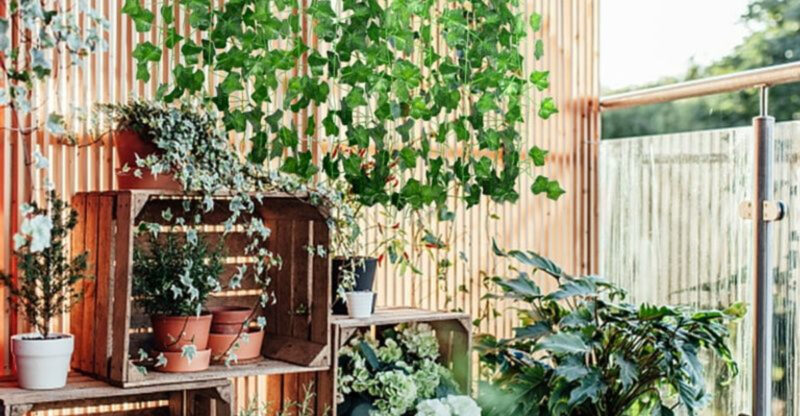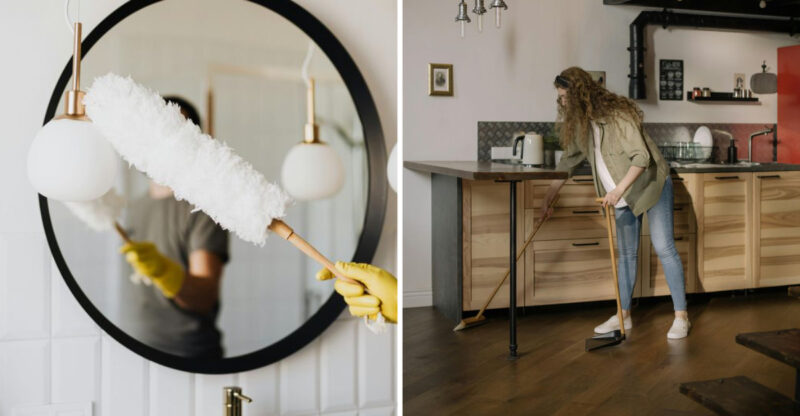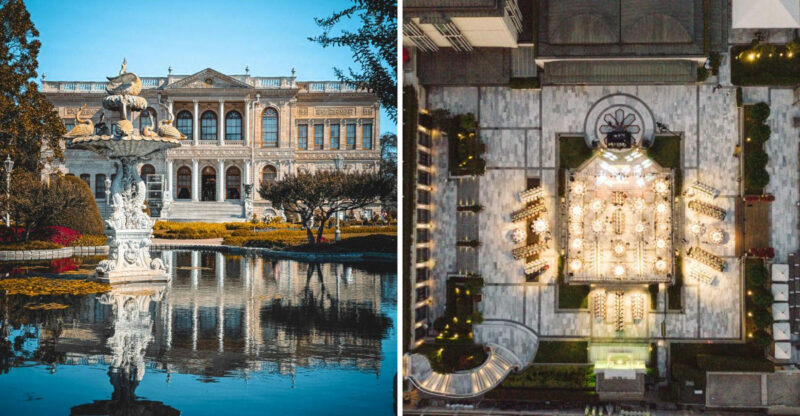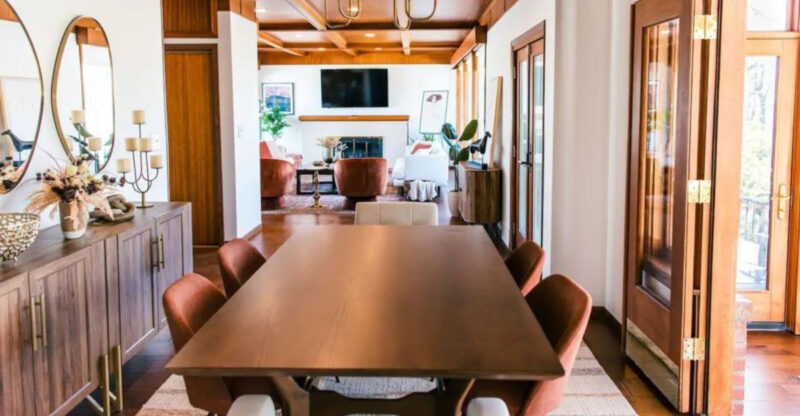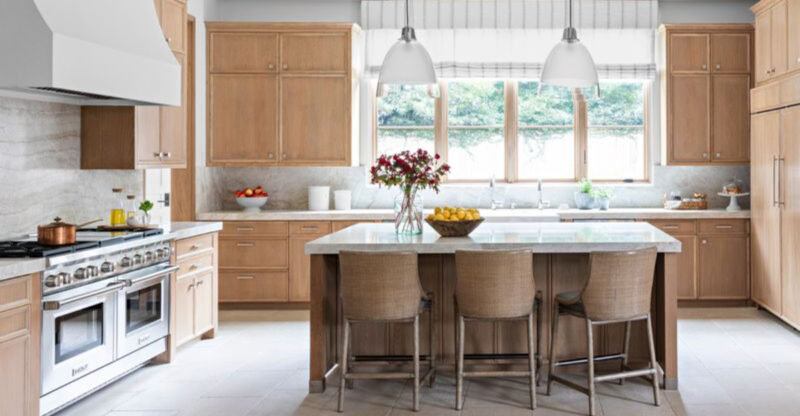16 Home Accessories That Instantly Date Your Space
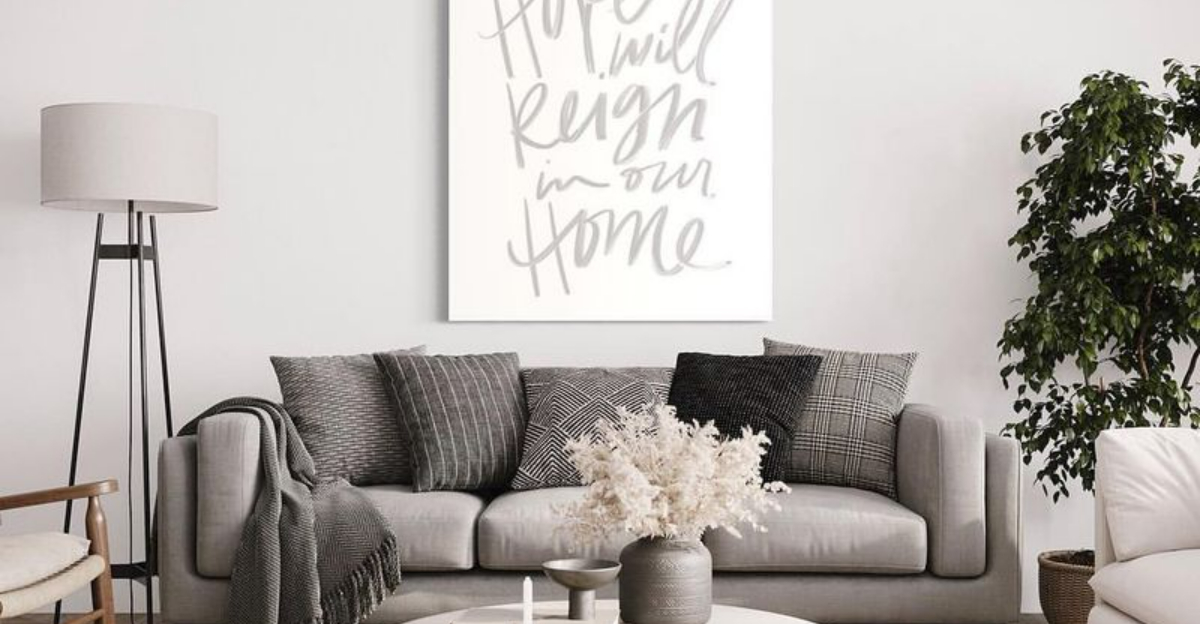
Your home tells a story about who you are and when you decorated it. While some vintage pieces add character, others just make your space look stuck in the past. I’ve noticed how quickly certain accessories can age a room, making it feel more like a time capsule than a modern living space.
Ready to freshen up your home? Let’s look at the items that might be secretly dating your decor.
1. Tuscan Kitchen Decor
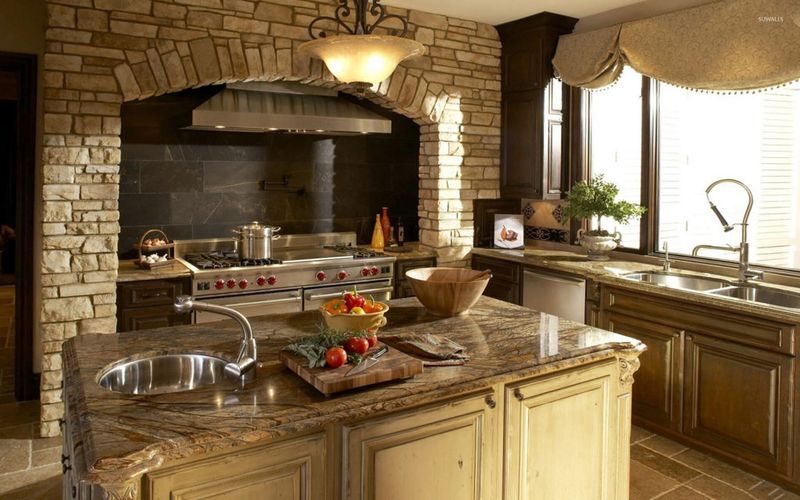
Remember when everyone wanted their kitchen to look like an Italian villa? Grape motifs, terracotta, and those ‘Live, Laugh, Love’ signs in faux-Italian typography are major giveaways of early 2000s design.
The warm yellows and reds once felt cozy but now appear heavy and artificial. If your kitchen still sports these Mediterranean touches, it might be time for a refresh with cleaner lines and a lighter palette.
2. Chevron Print Everything
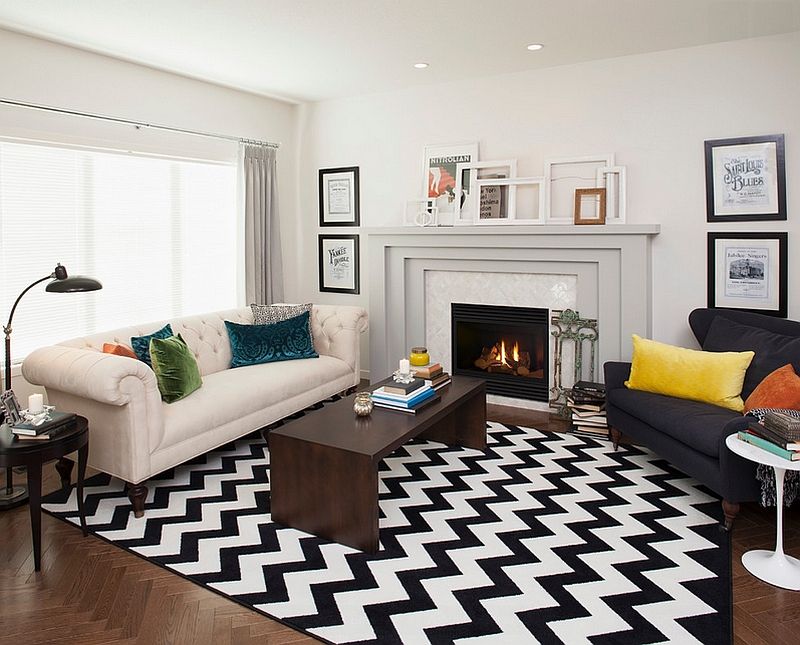
The zigzag pattern took over homes around 2013, appearing on everything from throw pillows to wall art. You couldn’t escape the geometric design that became the hallmark of the Pinterest era.
Bold chevron prints date your space instantly, especially in those gray and yellow combinations that dominated the decade. For a more timeless approach, I recommend swapping these out for subtle patterns or solid colors with interesting textures that won’t feel passé next season.
3. Mason Jar Everything
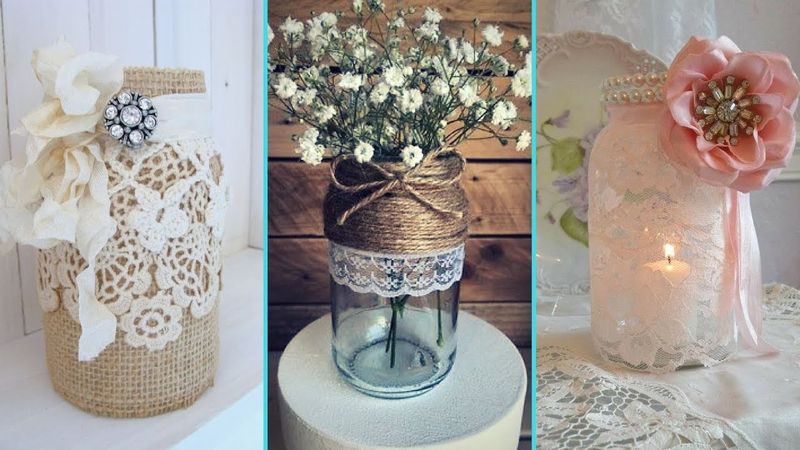
Mason jars transformed from simple canning containers to the ultimate crafting medium during the DIY boom. Painted, glittered, or wrapped in twine, they became lights, vases, soap dispensers, and more.
While practical in the kitchen for actual food storage, decorative mason jars with chalkboard labels and burlap ribbons instantly mark your decor as from the 2010s. Try sleeker containers or actual vintage pieces if you’re after that handmade charm without the dated look.
4. Edison Bulb Overload
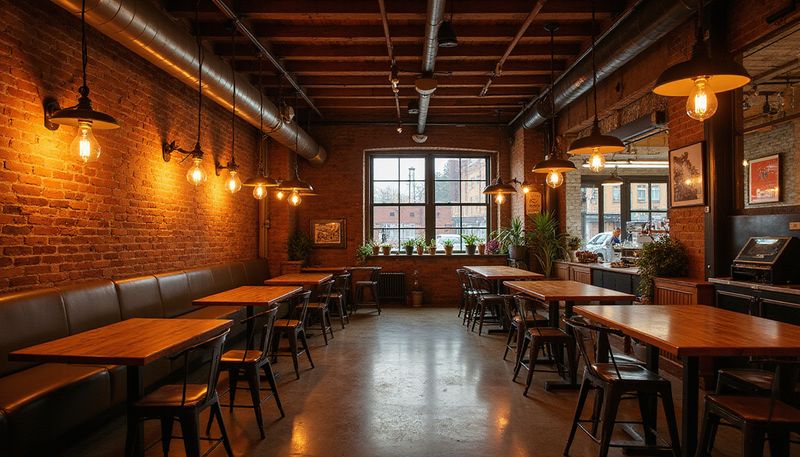
Exposed filament bulbs burst onto the scene with industrial and farmhouse styles, hanging bare from ceilings and fixtures everywhere. Their warm glow felt novel and authentic when they first appeared.
Now, seeing a cluster of Edison bulbs typically signals a space hasn’t been updated in years. Modern lighting has moved toward cleaner designs with diffused light that’s easier on the eyes. Keep maybe one as an accent, but consider updating the rest of your lighting scheme.
5. Word Art Wall Signs
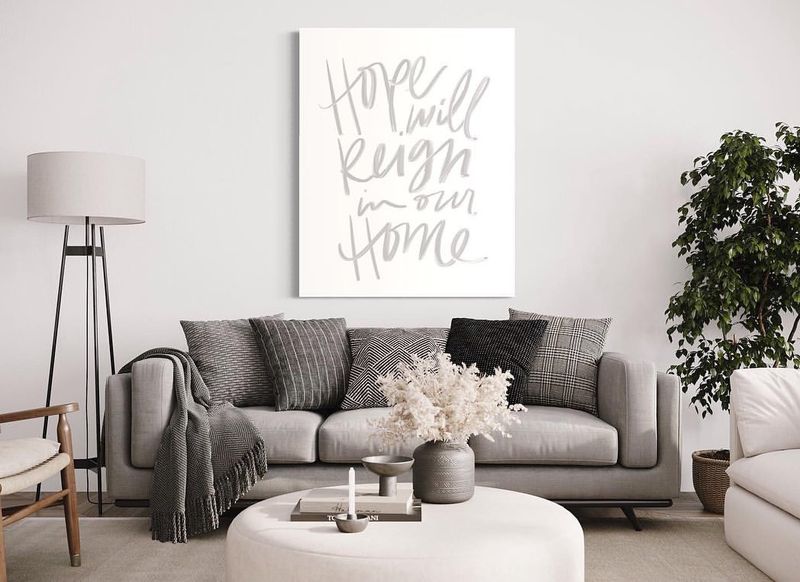
Nothing screams “I decorated in the 2010s” quite like those chipboard words spelling out ‘EAT’ in your kitchen or ‘FAMILY’ in your living room. These mass-produced text decorations quickly saturated the market after gaining popularity on home makeover shows.
While they seemed like perfect personalization at the time, they’ve become visual clichés. Consider replacing them with original artwork or vintage pieces that tell your unique story instead of generic phrases.
6. Matching Furniture Sets
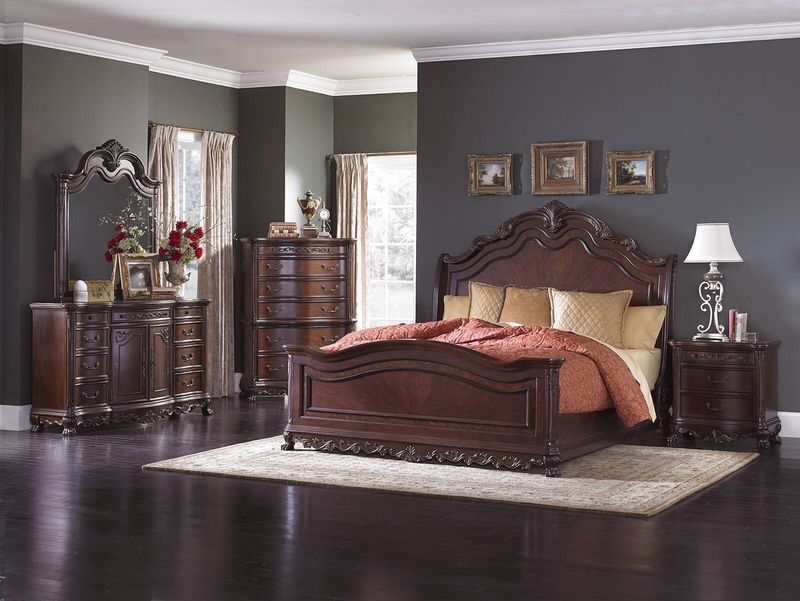
Walking into a bedroom with the identical headboard, dresser, nightstands, and mirror from the same collection is like stepping back into the 1990s. These showroom-perfect sets lack personality and creativity.
Today’s approach mixes complementary pieces that work together without being twins. Try keeping the larger pieces and swapping out smaller ones with different styles. This creates a more collected, personalized look that evolves with your taste rather than being frozen in time.
7. Overstuffed Reclining Sofas
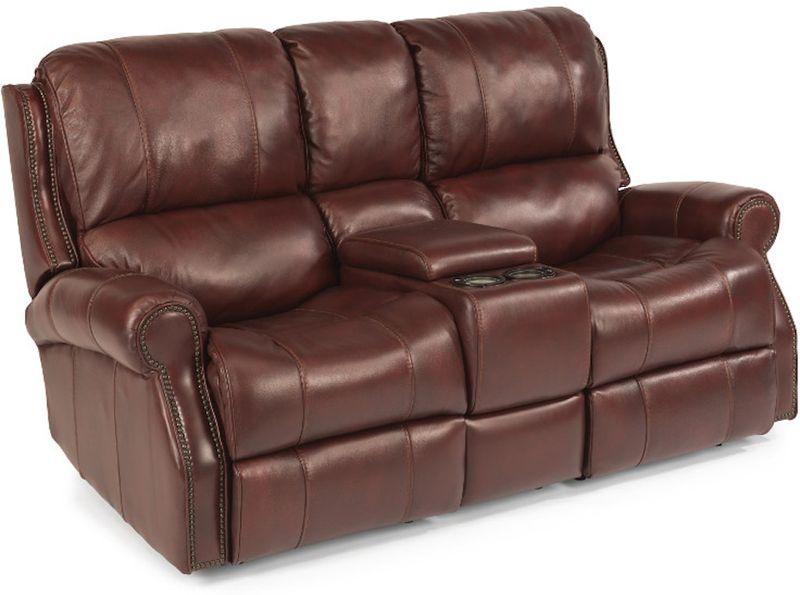
Those massive, puffy leather recliners and sofas with built-in cup holders were the height of comfort in the early 2000s. The bulky proportions and excessive padding now look clunky and consume too much visual space.
Contemporary seating offers comfort without the bulk, using sleeker profiles and cleaner lines. If you’re not ready to replace a functional piece, consider updating with new throw pillows and a stylish throw blanket to distract from the dated silhouette.
8. Glass Block Windows
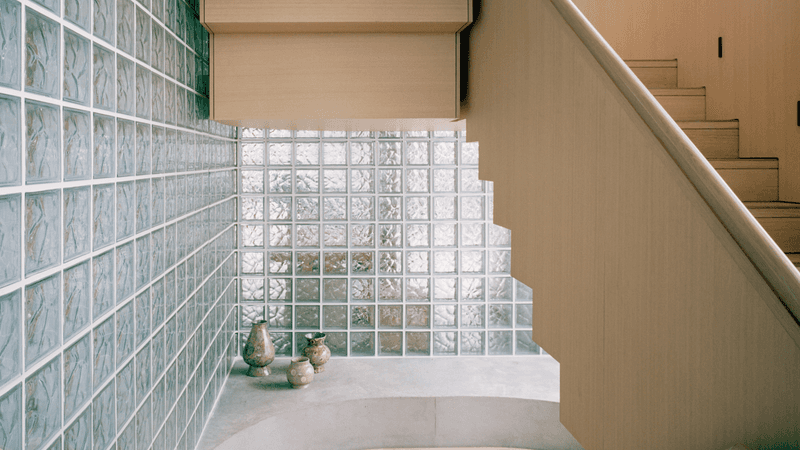
Popular in bathrooms and basements of homes built in the 80s and 90s, glass blocks were once considered modern and practical. Their bubbly, distorted appearance provided privacy while still allowing light to filter through.
Today they read as instantly outdated compared to sleeker privacy solutions. Frosted glass, smart glass that changes opacity, or even stylish window films offer the same benefits with a more contemporary look. Replacing them makes a dramatic difference in updating your space.
9. Vertical Blinds
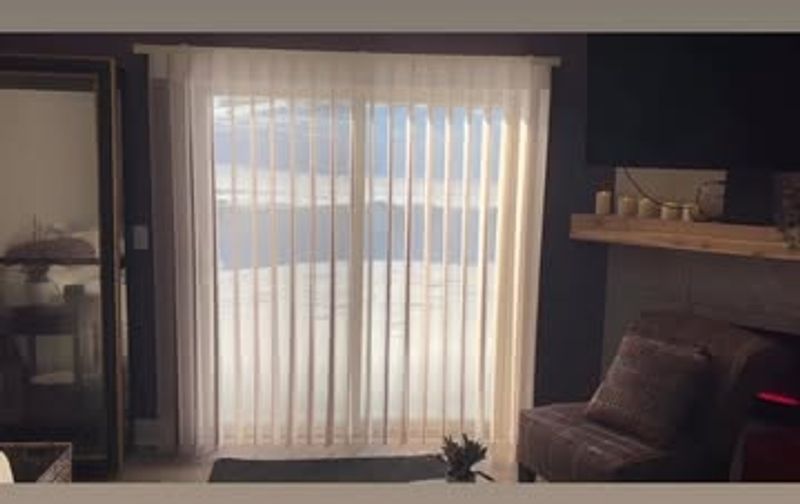
Those long plastic strips that clack together every time someone walks by were standard issue in apartments and sliding glass doors for decades. They collect dust in hard-to-clean crevices and frequently break or warp.
Vertical blinds instantly age a room, giving it that unmistakable 80s office or rental apartment feel. Swap them for panel curtains, modern roller shades, or even plantation shutters for a significant visual upgrade that provides the same function with much more style.
10. Wallpaper Borders
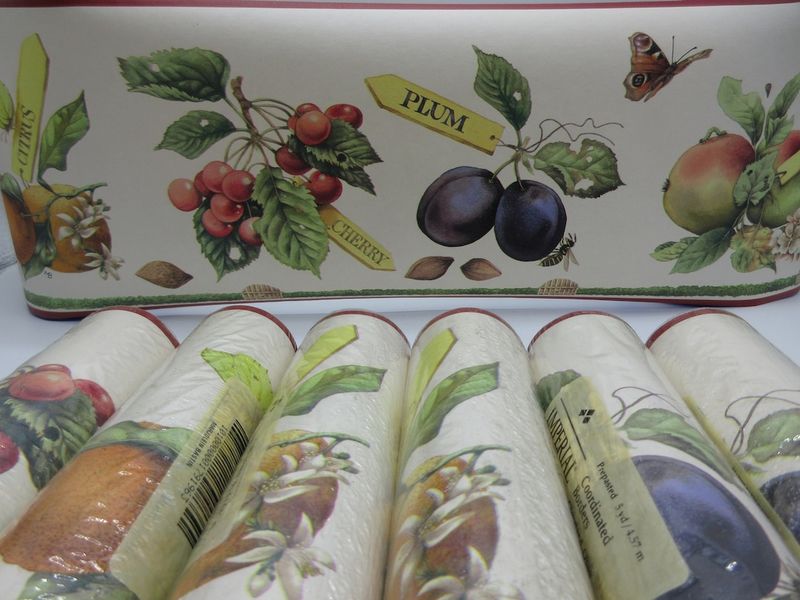
Running along the top of walls, these narrow strips of wallpaper featuring country geese, ivy vines, or fruit patterns were inescapable in 90s homes. They were meant to add a decorative touch without committing to full wallpaper.
Nothing dates a room faster than these horizontal strips, especially with their typically themed designs. Modern walls favor clean lines or, if you want visual interest, a full accent wall with contemporary patterns that extend floor to ceiling.
11. Fake Fruit Displays
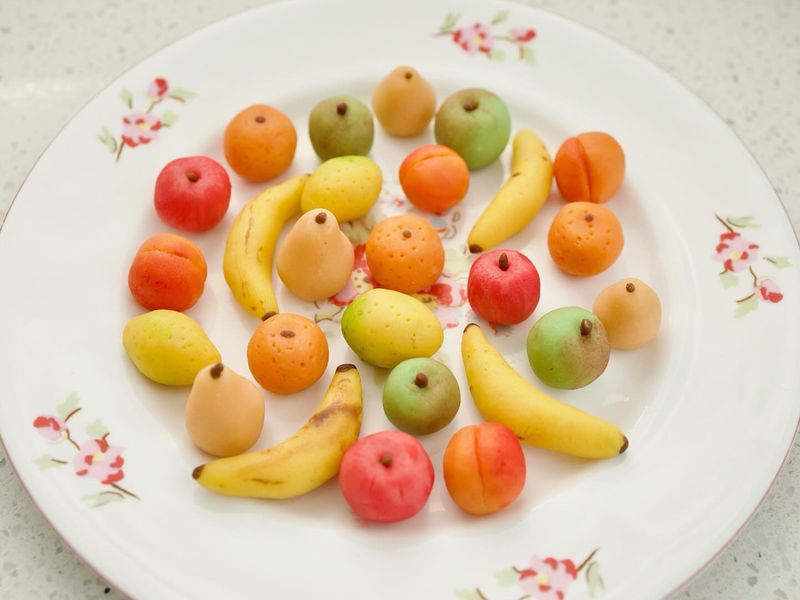
Bowls of dusty plastic grapes, apples, and bananas once graced countless dining tables and kitchen counters. These artificial arrangements were meant to add color without maintenance but ended up looking fake and collecting grime.
Faux fruit has fallen far out of favor in contemporary design, which prefers either actual fresh fruit or nothing at all. If you want the color and life of a centerpiece, consider low-maintenance plants, seasonal items, or artisanal ceramics instead of these dated dust collectors.
12. Inspirational Bathroom Quotes
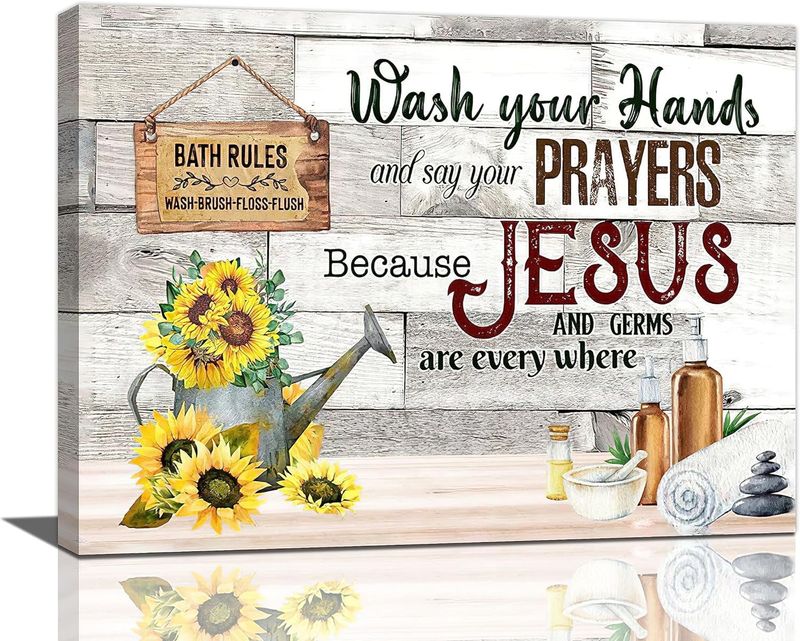
Small wooden signs reminding you to “Wash Your Hands” or “Relax, Soak, Unwind” became bathroom staples in the 2010s. These cutesy phrases, often in cursive fonts against distressed backgrounds, were part of the typography trend that swept home decor.
The bathroom isn’t really the place for life affirmations or instructions. Modern bathrooms favor clean simplicity with maybe one striking piece of actual art. Your guests already know to wash their hands without a sign to remind them!
13. Tiled Countertops
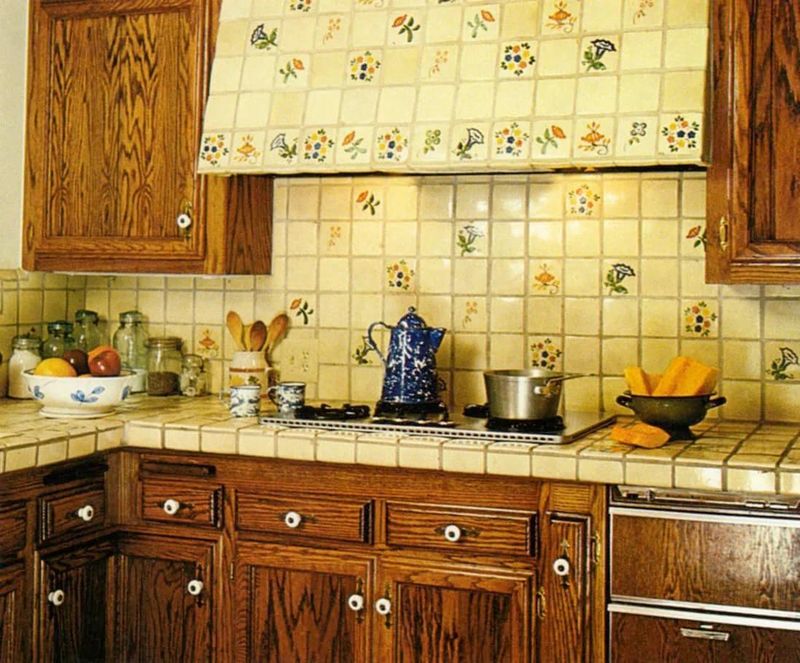
Small square tiles with grout lines covering kitchen and bathroom countertops were standard in homes from the 70s through the 90s. Often in beige, white, or pastel colors, these surfaces were considered practical and affordable at the time.
The problem with tiled counters isn’t just their dated appearance but also the functionality. Those grout lines collect dirt, harbor bacteria, and make rolling out dough impossible. Solid surface options like quartz or even butcher block provide cleaner lines and much easier maintenance.
14. Doorway Beads
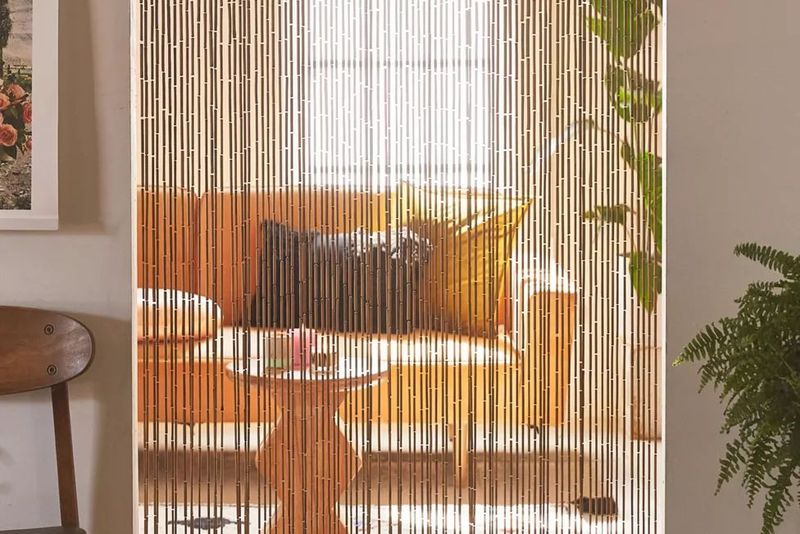
Hanging beaded curtains in doorways had their heyday in the 60s and 70s before making a brief comeback in the late 90s. The clicking, swishing partitions were meant to define spaces while maintaining an open feel.
Today they read as purely nostalgic or novelty items rather than serious design elements. Modern room dividers use architectural features, sliding panels, or statement furniture to delineate spaces without the dated hippie vibe that beaded curtains inevitably bring.
15. Silk Plants Gathering Dust
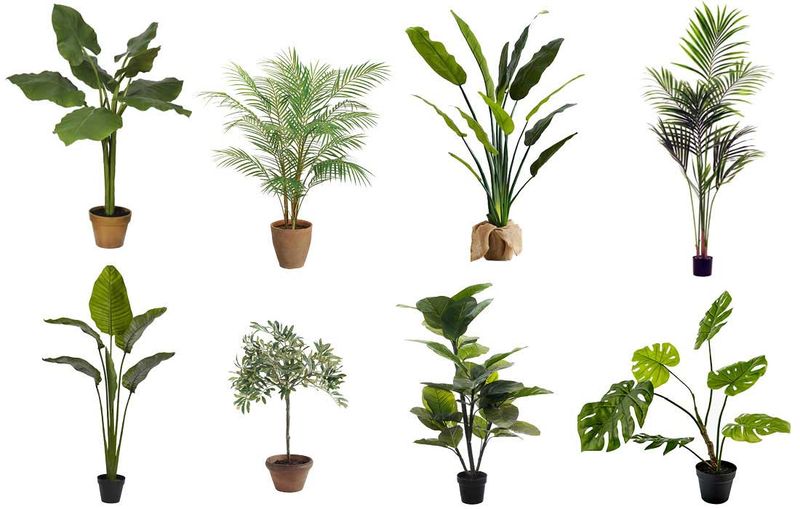
Artificial ferns, palms, and flowers stuffed into corners and atop cabinets were once considered low-maintenance alternatives to live plants. Over time, they collect dust, fade from sunlight, and develop that unmistakable artificial sheen.
The current plant trend embraces real greenery, even if it’s just hard-to-kill varieties like snake plants or pothos. If you can’t manage live plants, today’s high-quality faux options look much more realistic than their predecessors—just remember to dust them regularly!
16. Frosted Glass Pendant Lights
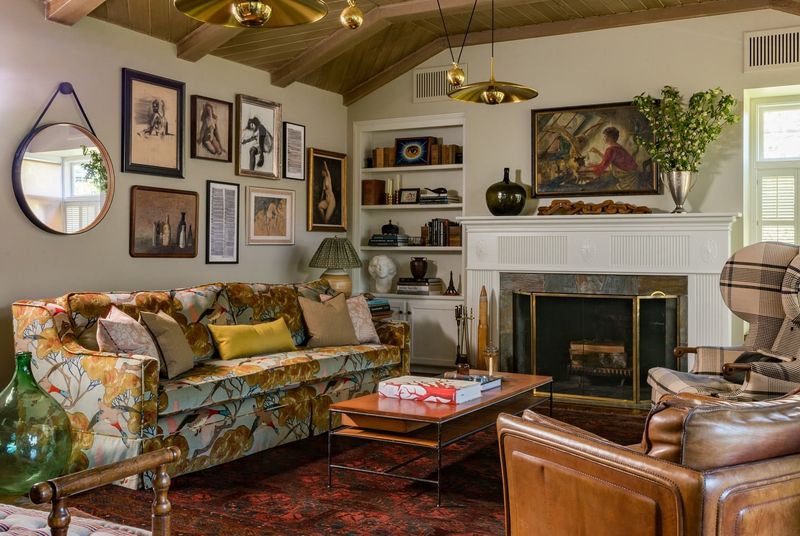
Those frosted glass dome lights with the brass or bronze fixtures were installed in countless dining areas and entryways through the 90s and early 2000s. Their generic look became the default choice for builders and homeowners alike.
Lighting has since become much more of a statement feature in home design. Contemporary spaces treat light fixtures as sculptural elements and opportunities for personal expression. Replacing dated pendants with more distinctive options is one of the fastest ways to modernize your space.


